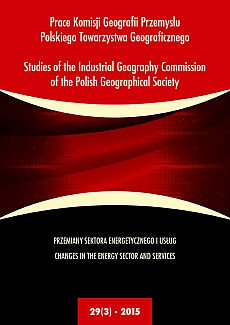Tourist attractions in Jordan and their importance for development of tourist services
DOI:
https://doi.org/10.24917/20801653.293.4Keywords:
destinations, employment, tourist attractions, travel servicesAbstract
Jordan is an Muslim country situated on the Arabian Peninsula, which has a variety of touristand anthropogenic attractions related to the history, culture, as well as nature-based attractions interalia on geological phenomena. The important economic role is played by tourism, developed by Britishexperts commissioned by the King, with a well thought infrastructure and a rich range of differentservices. Due to the fact that a significant part of the FDI (Foreign Direct Investment) has been placedin investment projects related to the tourism industry and the hospitality industry (hotel industry), it isexpected that the significance of the tourism sector in the Jordanian economy will continue to grow inthe future. As a consequence, since the potential development of the tourist economy of this countryrefers to the natural values, this paper presents the most attractive ones, namely Petra, the Wadi-RumDesert (the Valley of the Noon), the Dead Sea, Akaba, Amman. For this reason, we performed theanalysis of tourist destinations, tourist profiles, seasonal tourist traffic to such sites, accommodationand income from tourism and employment in the sector of services. The purpose of the paper was toanalyze the Jordanian tourism market compared to other countries in the Middle East and prospects forits further development.Downloads
Metrics
References
Bender, F. (1974). Geology of Jordan. Contribution to the Regional Geology of the World. Berlin: Gebrueder, Bornatraeger.
Encyklopedia geograficzna świata. Azja (1998). Kraków: Wydawnictwo OPRES.
Ferreira, S., Rial, A., Varela, J. (2009). Post Hoc Tourist Segmentation with Conjoint and Cluster Analysis. Revista de Turismo y Patrimonio Cultural, 7. Wydawnictwo Pasos.
Gołembski, G. (red.). (2002). Kompendium wiedzy o turystyce. Warszawa–Poznań: PWN.
Gunn, C.A. (1972). Vacationscape: designing tourist regions. Bureau of Business Research, University of Texas at Austin.
Kowalczyk, A. (2001). Geografia turyzmu. Warszawa: PWN.
Kruczek, Z., Sacha, S. (1995). Geografia atrakcji turystycznych Polski. Kraków: Wydawnictwo Ostoja.
Kurek, W. (2007). Turystyka. Warszawa: PWN.
Lijewski, T., Mikułowski, B., Wyrzykowski, J. (2002). Geografia turystyki Polski. Warszawa: PWE.
Makhlouf, I.M. (1998). Storm-generated channels in the Middle Dubaydib Sandstone Formation, South Jordan. J. King Saud Univ. 10. Science (1).
Mayhew, B. (2006). Lonely Planet – Jordan. Lonely Planet.
Medlik, S. (1995). Leksykon podróży, turystyki i hotelarstwa. Warszawa: PWN.
Meyer, B. (red.) (2010). Potencjał turystyczny: zagadnienia przestrzenne. Szczecin: Wydawnictwo Naukowe Uniwersytetu Szczecińskiego.
Nowacki, M. (2002). Uwarunkowania aktywności żeglarskiej. Poznań: Wydawnictwo AWF.
Downloads
Published
How to Cite
Issue
Section
License
Articles are published under the terms of the Creative Commons License (CC BY-ND 4.0; Attribution– NoDerivs).

